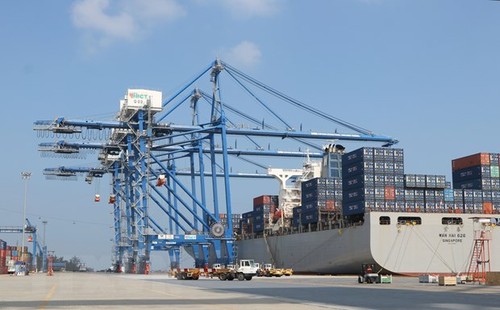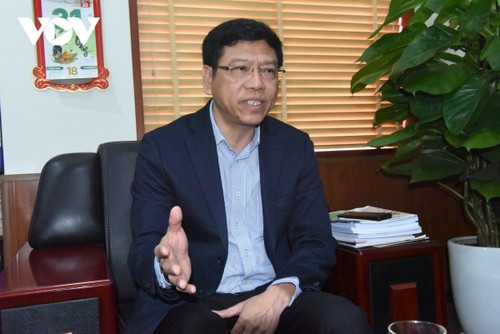 Tan Cang-Hai Phong International Container Terminal (TC-HICT) (Photo: Minh Thu/VNA) Tan Cang-Hai Phong International Container Terminal (TC-HICT) (Photo: Minh Thu/VNA)
|
Vietnam has developed a complete seaport system from North to South with 286 ports. The northern city of Hai Phong has the most ports with 50, followed by Ba Ria-Vung Tau province with 45 and Ho Chi Minh City ranks third with 43 ports.
The seaport system is comprehensively planned, connected with major economic centers and regions.
Large seaports have served as a focal point for import and export of goods and driving the development of the regions.
Quang Ninh and Hai Phong seaports are connected with the northern key economic region while the seaports in Thua Thien-Hue, Da Nang, Dung Quat, and Quy Nhon are connected with the central economic region, and seaports in Ho Chi Minh City, Ba Ria-Vung Tau, and Dong Nai linked with the southern key economic region. Can Tho and An Giang seaports serve the Mekong Delta key economic region.
A number of seaports have been upgraded to international standards such as the cluster of the Cai Mep International Terminal and Ba Ria-Vung Tau and the cluster of Tan Cang-Hai Phong International Container Terminal (TC-HICT), which are deep-water container ports, able to receive the world's super-heavy vessels.
Nguyen Xuan Ky, CMIT’s General Director and Secretary General of the ASEAN Ports Association, said that as the gateway port in the southeastern region and also the international transshipment port, over the past 10 years, Cai Mep-Thi Vai has brought into full play its role as a gateway of the southern key economic region.
“More than 30 ships have called at Cai Mep-Thi Vai deep-water port with rapid transport frequency,” said Ky.
Over the years, Vietnam's seaport system has constantly improved its capacity and service quality. As a result, the average volume of goods handled through the seaport system increases 10% per year, reaching 734 million tons last year.
Vietnam's seaport system capacity has been significantly improved, matching the development of international fleets. Ba Ria-Vung Tau port can receive container vessels of more than 200,000 DWT.
Hai Phong Port is capable of receiving 145,000 DWT container ship. The quality of seaport services has improved thanks to investment from several port operators and international and domestic shipping lines.
Le Quang Trung, Vice President of the Vietnam Association of Logistics Businesses and Deputy General Director of the Vietnam National Shipping Lines, said, “To date, Hai Phong has 50 seaport enterprises, with about 2,000 businesses engaged in logistics and supply chains. The Logistics Hub plays a very important role in connecting imports and exports in the North and the world market.”
 Nguyen Xuan Sang, Deputy Minister of Transport Nguyen Xuan Sang, Deputy Minister of Transport
|
Vietnam has also established 32 shipping routes including 25 international transport routes. In addition to routes to Asian countries, Vietnam has created 16 routes to North America and Europe.
In the 2022 edition of the Emerging Market Logistics Index report by Agility, a leader in global transport and logistics, Vietnam ranked 11th of 50 global emerging logistics markets and 3rd in ASEAN, just behind Singapore and Thailand.
For many consecutive years, logistics has been a fast-growing and stable economic sector with an average growth rate of 14 to 16%, contributing between 4 and 5% to Vietnam’s GDP growth.
Nguyen Xuan Sang, Deputy Minister of Transport, said as Vietnam has a high economic openness and development speed depending greatly on import and export activities, the seaport system and logistics activities are increasingly important to develop the marine economy.
He said the master plan on development of Vietnam's seaport system until 2030 with a vision to 2050 has been approved by the Prime Minister.
“The Ministry has assigned the Vietnam Maritime Administration to develop a detailed planning for 5 groups of seaports and a detailed planning on the land and water of all seaports in Vietnam,” Sang noted.
Building and repairing ships is an important activity to develop the maritime economy. Vietnam's shipbuilding industry has initially formed the technical infrastructure for the shipbuilding industry.
Greater investment in the shipbuilding industry plus developing the seaport system and improving the capacity of the shipping system are the key solutions for Vietnam to develop sustainably and become prosperous from the sea.